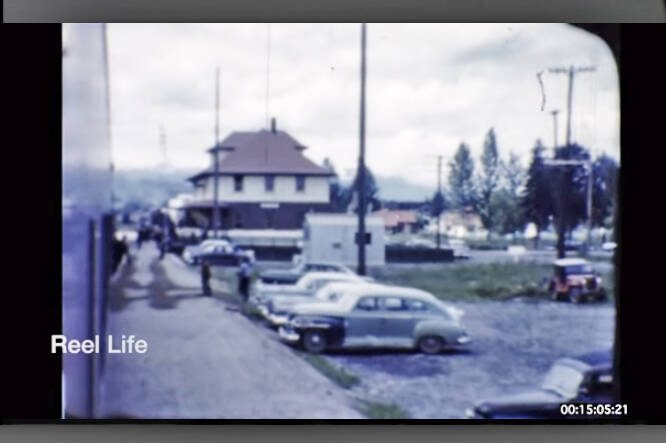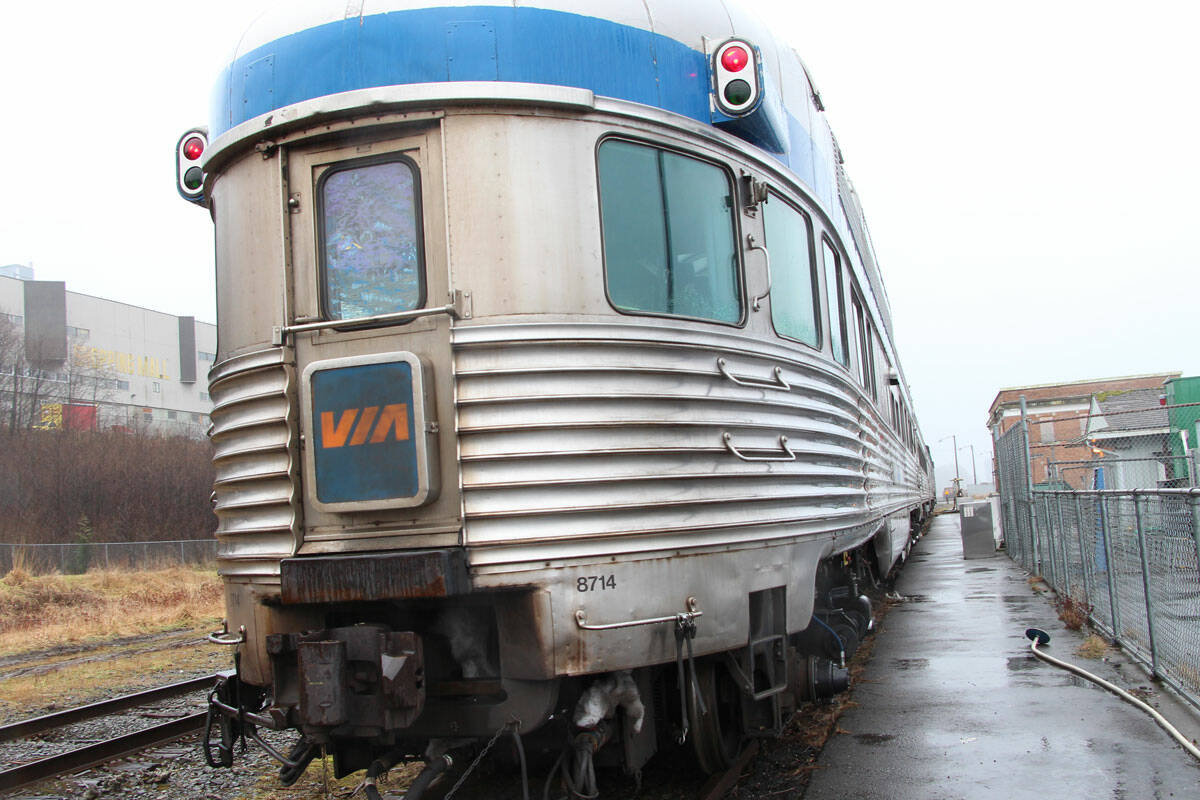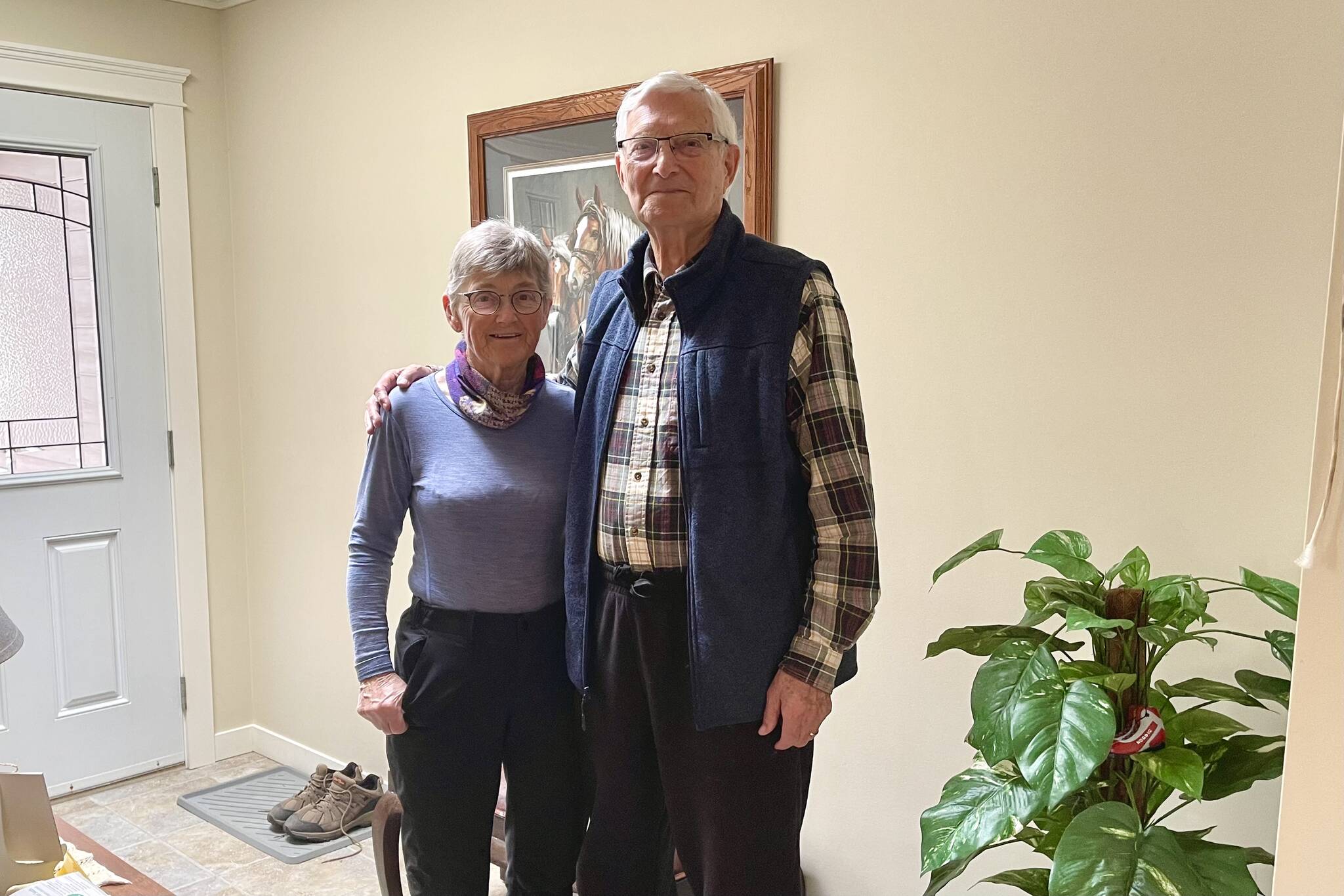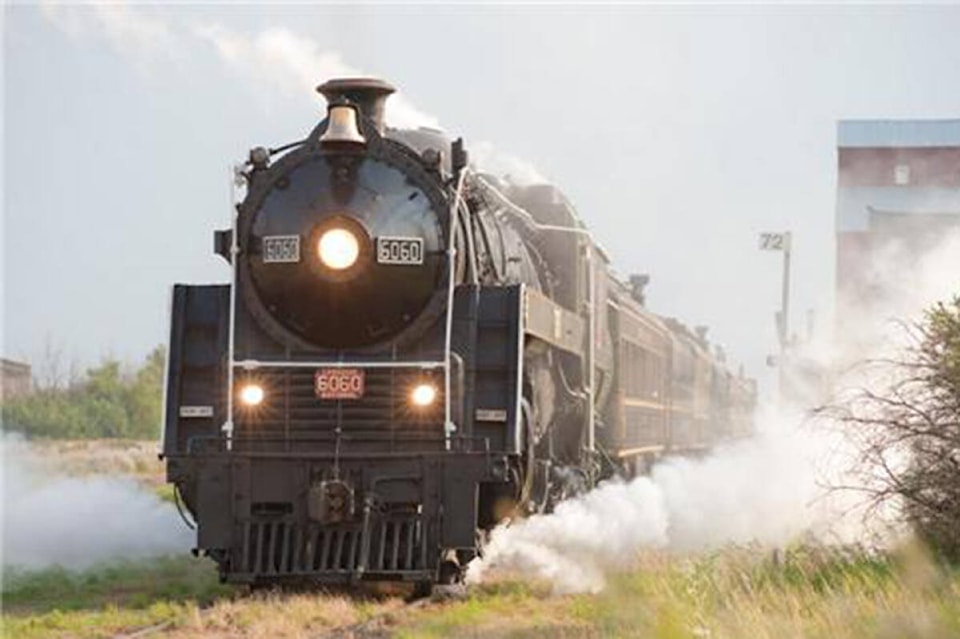When you work with machinery all of your life — like driving trucks, trains or flying a plane — you know every nuance of how they work. You feel the vibrations through your feet, understand the sounds, smells, and movements as second nature. You know when all is well, and can immediately identify when something is wrong.
For 41 years, Mr. C. Reid “rode the rails,” driving steam engines in the beginning, and eventually retiring with Via Rail in Smithers. He knows trains inside out.
His journey on the railways began in Newfoundland in 1952, as a fireman in the engines on the “coal burners,” (steam engines), where he stoked the fires with coal, powering the trains as they went along. He kept that job for two years, and was then promoted to Engineer, working from his hometown in Corner Brook, NL, for sixteen more years.
Once the rail companies made the shift from steam engines to diesel oil, Reid figures he’s “lucky to be alive after breathing the black smoke of stinking diesel for years,” he said with a laugh, but seriousness too.
“In 1971, officials came from Western Canada. They were interested in getting the engineer surplus that was in Eastern Canada to come out here because they were short of engineers in Alberta, and British Columbia. So, they arrived at my house, in Corner Brook. It was a person from Prince George who was the train master down there. He said to me, there’s a town in Northern British Columbia, and he named off all the things to do, like golf, snowmobiling, and skiing. I said, ‘I’ll give that a try.’ I had never heard of Smithers before my life,” Reid recalls being told of the opportunity.
“On the 15th of June, I worked my last shift in the portables yard in Newfoundland, and ventured off for a place called Smithers, B.C.”
When he and another fellow, who had also signed on to to give it a try arrived, there were two people working in Smithers, along with a foreman and there was a shop in the yard.
“We had three months to make up our minds if we want to stay up here. So I worked here for one month, while it was all new territory, and these 36,000 ton coal trains pushing you down mountainsides, it was very stressful, but I was making big money. The territory was wild and beautiful, so I stayed,” said Reid.
He recalls his “introduction” to driving a passenger train to Prince Rupert as being one where he had to jump right in. He was certainly qualified, but it was different having only a few cars, going along the river and through the mountains.
“It was beautiful, you have a totally different view and experience from what you see on the road. I really enjoyed it and it confirmed Smithers was the place for me,” Reid recalls fondly.
He remembers a time they brought a refurbished steam train, The Royal Hudson, from back east, doing a special run from coast to coast. Of course, being the one knowing how to drive one, he picked up the run in Prince George taking the train to Prince Rupert, and back. Coming out of Prince Rupert, he said was one of the most special memories in his life.
“Coming out of Prince Rupert, the river on my right, the canneries were still working along the river, 20 or more boats fishing on the Skeena and maybe 40 eagles sitting in the trees and circling. I opened my window, put my head out, said ‘talk to me,’ and gradually let the old girl go. The roar of the engine in my ears breaking the silence, the sun coming up, it was a once in a lifetime magical moment. I was so happy and it was just plain fun, and brought back all the long ago days, to have the train chattering away at me, it was marvelous to do it again one last time.”
He had many moments he loved on the rails over his career. He saw so many changes, he recalls. Starting out with Canadian Pacific Railway, then Canadian National Rail, and then the opening of Via Rail Canada, which he switched to, when the opportunity arose in Smithers, and that is the rail line he retired with.
Although the operational rules were similar on the engines, the railway itself went from manual operations, to automatic lights and switching, to being a computerized system.
“When I started out we were handed three or four papers, called train orders, to know where you were headed, where you waited and would switch. In 1985, dispatch automated the system through a system of automated lights to tell you when to stop and go, and now they receive instructions on a panel in the engines that looks more like what pilots use,” Reid said of the changes.
Even though he is retired, he understands the systems, the safety and the faults, probably more than most who work for the rail companies. He is concerned.
The system, in his opinion, should not be a self monitoring one, that investigates their own safety failures and incidents. He has tried to reach out regarding his concerns locally to the Mayor of Smithers, the MLA and the MP’s offices, but has yet to connect.
“I walk a lot along the paths that take me along the rail lines and I see the condition of the empty cars, the flat spots on the wheels (those he can even hear in town as they make a distinctive noise along the tracks), and the contents of the tanker cars and the condition of them concern me.”
The fact that they used to have two people checking the cars as they went through the yard, which they no longer do, the age of the cars and the ever increasing traffic have Reid on alert.
“They should have crews here in Smithers ready to take the flammable tanker out immediately, but they don’t. Some sit here for quite some time and it is really dangerous for the town,” Reid thinks.
He is also aware the CN fire hydrants have not worked since they took out the roundhouse, (where the trains used to be turned around), and feels that should be unacceptable to all residents.
The downfalls of the railroads today, however, do not diminish the 41 years of past, where he enjoyed his time.
Having a schedule running Via Rail to Prince George three times a week, and Prince Rupert two days, gave him the time to cross country ski, hike, play golf and enjoy exploring the outdoors with wife Joanne, something they both love to do.
At 91, he is writing his memoirs, still keen and sharp in memory recall and humour, he makes the most of his very active life. The couple are busy planning trips, spending time with family and friends and both are still very active in the community.
If you see a tall, dapper man walking the Perimeter Trail path along the train tracks in Smithers, seeming to check over the trains with an astute eye, you might ask, if he is Mr. Reid? You might strike up a conversation and have the great fortune to hear a tale or two of the trains and his adventures on them.



